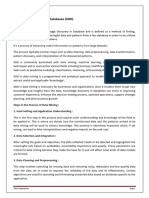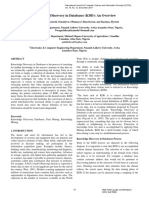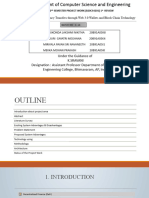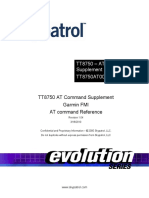0% found this document useful (0 votes)
226 views5 pagesKDD-Knowledge Discovery in Databases
Knowledge Discovery in Databases (KDD) is a process for extracting useful knowledge from data, involving steps like data cleaning, integration, selection, transformation, mining, evaluation, and representation. KDD offers advantages such as improved decision-making and efficiency but also poses challenges like privacy concerns and high costs. It is an iterative process that requires careful handling of data quality and complexity to avoid unintended consequences.
Uploaded by
Jayesh GuptaCopyright
© © All Rights Reserved
We take content rights seriously. If you suspect this is your content, claim it here.
Available Formats
Download as PDF, TXT or read online on Scribd
0% found this document useful (0 votes)
226 views5 pagesKDD-Knowledge Discovery in Databases
Knowledge Discovery in Databases (KDD) is a process for extracting useful knowledge from data, involving steps like data cleaning, integration, selection, transformation, mining, evaluation, and representation. KDD offers advantages such as improved decision-making and efficiency but also poses challenges like privacy concerns and high costs. It is an iterative process that requires careful handling of data quality and complexity to avoid unintended consequences.
Uploaded by
Jayesh GuptaCopyright
© © All Rights Reserved
We take content rights seriously. If you suspect this is your content, claim it here.
Available Formats
Download as PDF, TXT or read online on Scribd
/ 5























































































